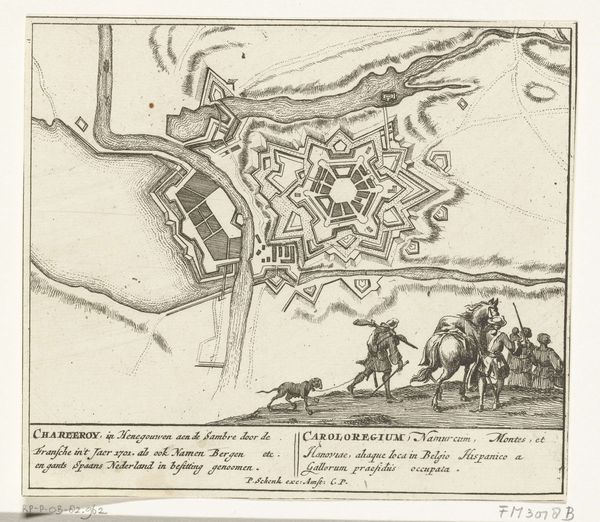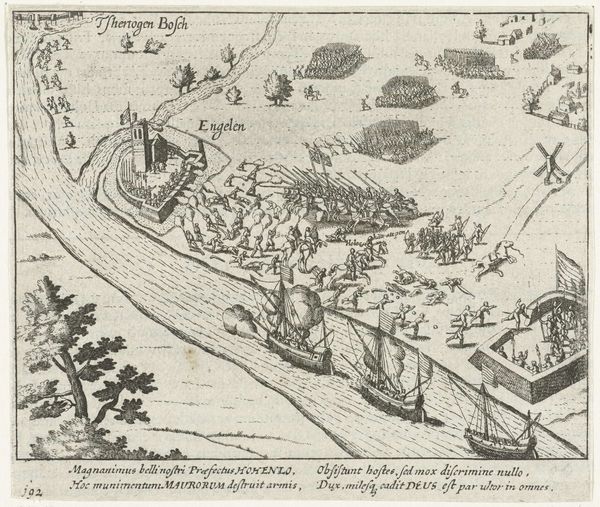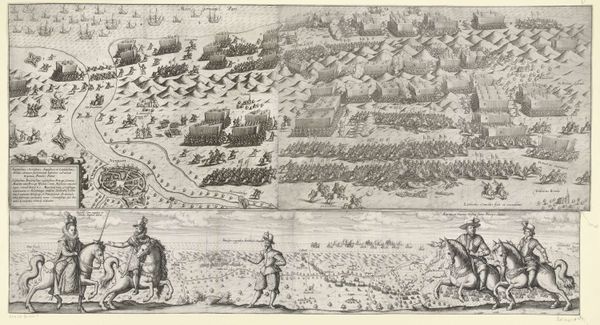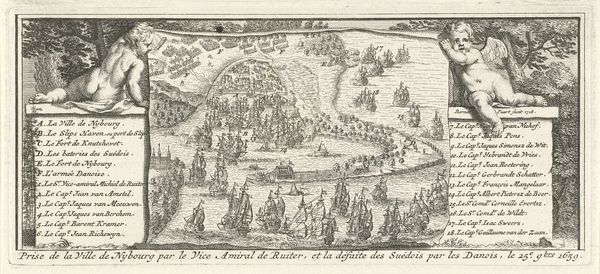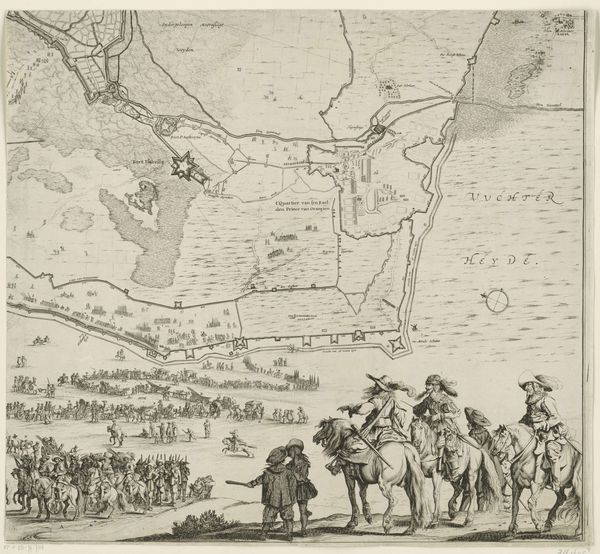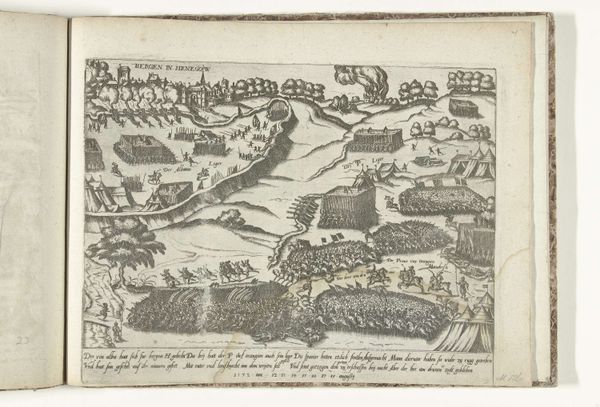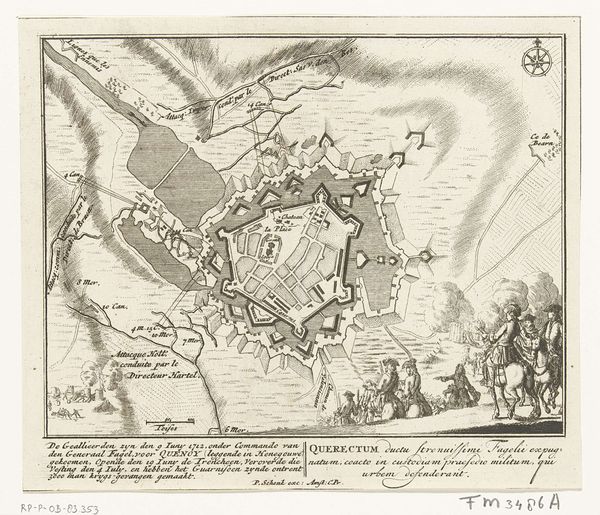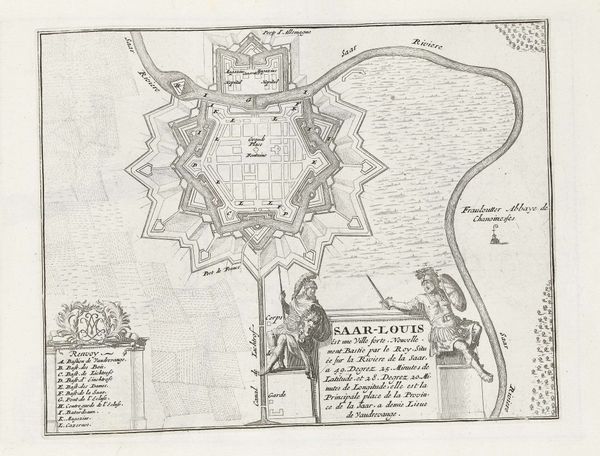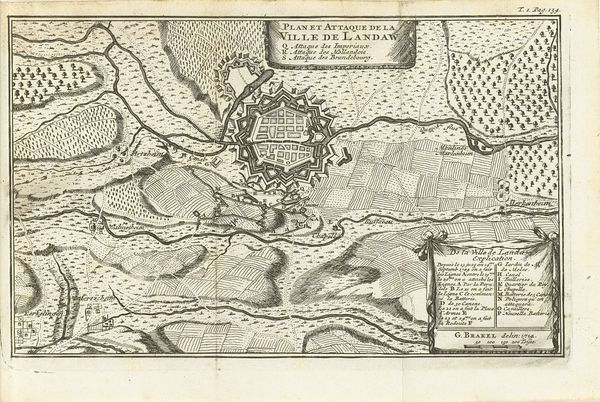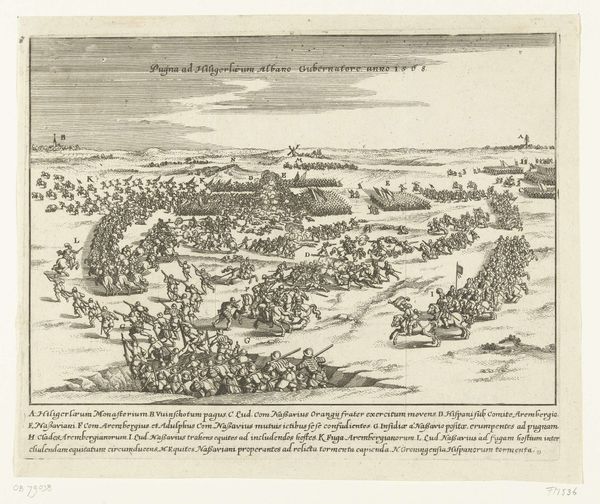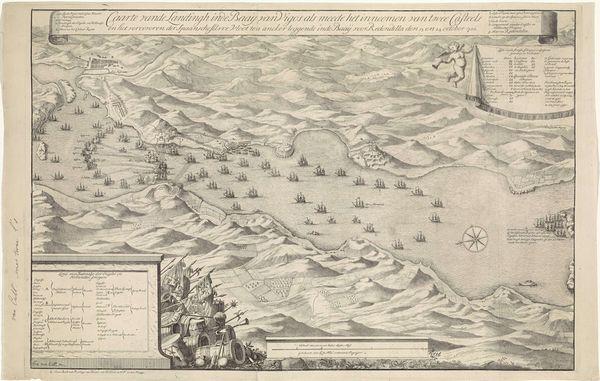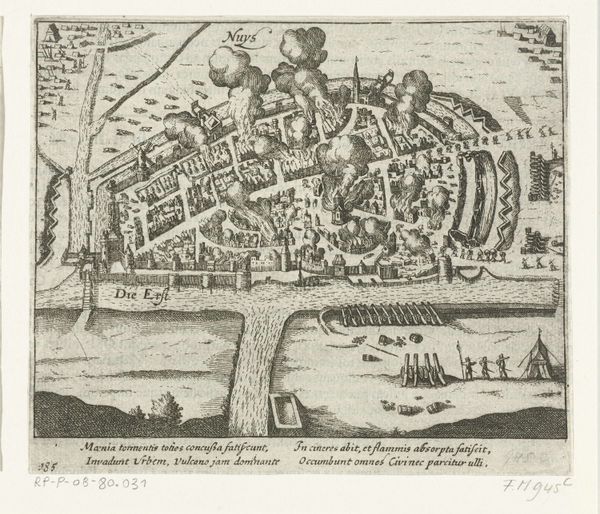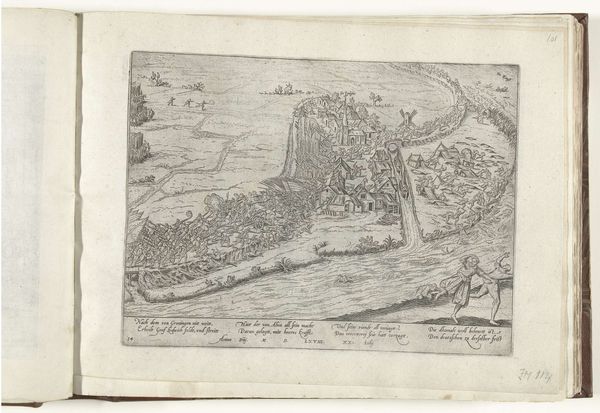
print, engraving
#
baroque
# print
#
pen illustration
#
old engraving style
#
landscape
#
cityscape
#
engraving
Dimensions: height 155 mm, width 176 mm
Copyright: Rijks Museum: Open Domain
Pieter Schenk created this print of Zoutleeuw in 1705, using etching. This intaglio process involves coating a metal plate with wax, drawing through it with a needle, and then immersing the plate in acid. The acid bites away the exposed metal, creating lines that hold ink. The physical character of this print—its fine, precise lines—speaks volumes about the skills of the printmaker. The image is carefully designed to capture the geometric forms of the fortifications. Think of Schenk, bent over his workbench, meticulously rendering the town’s defenses. Beyond craftsmanship, this print also reflects the political and military strategies of the time. Maps like these were crucial tools, used to understand and control territory during periods of conflict. The act of etching transforms geographic data into an aesthetic object, subtly merging art, science, and power. By focusing on the materiality and making of this print, we gain a deeper understanding of its historical context and cultural significance, moving beyond conventional art historical interpretation.
Comments
No comments
Be the first to comment and join the conversation on the ultimate creative platform.
